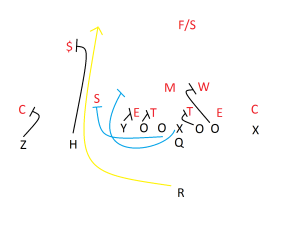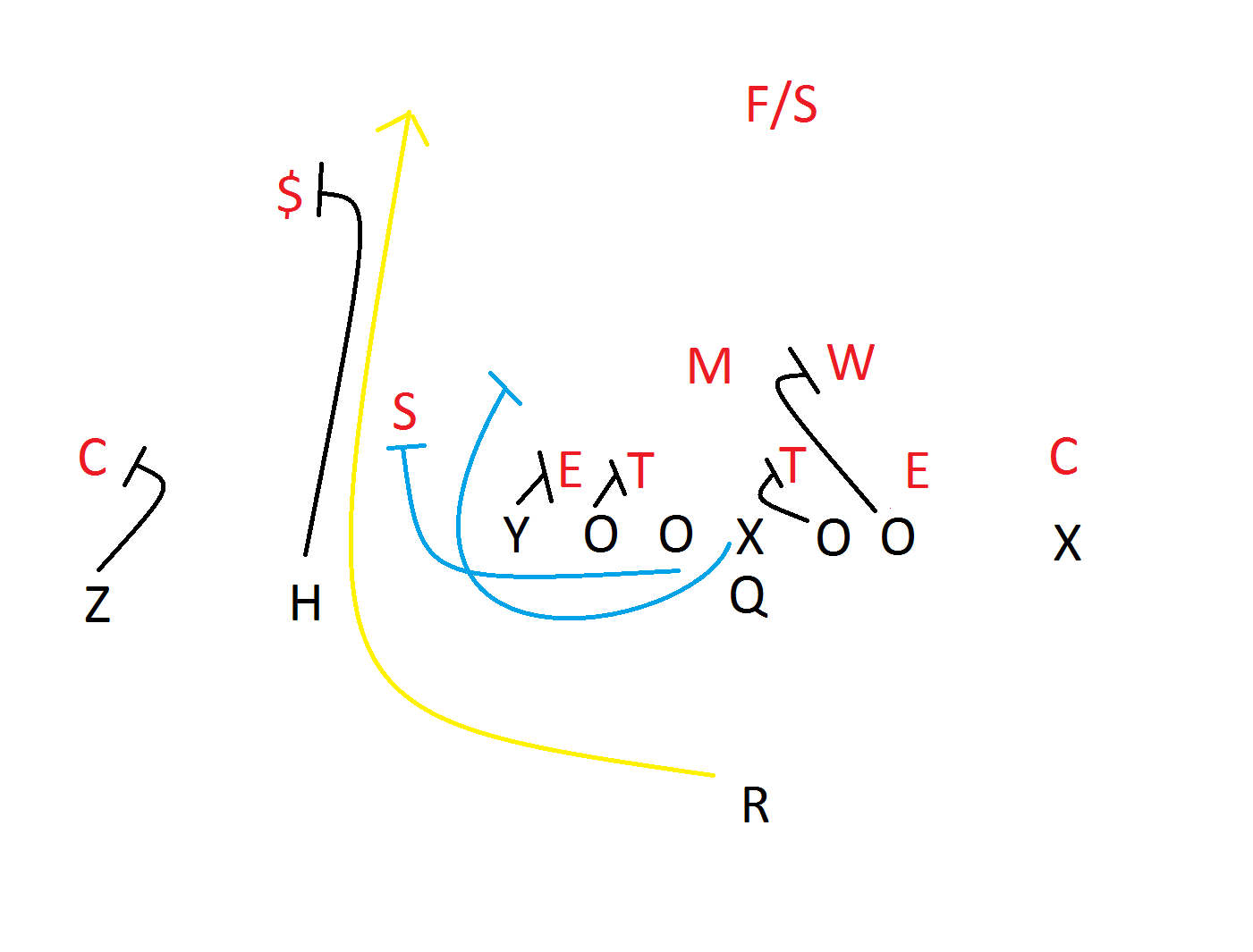David Shaw said that he needed to make some changes to how the Stanford football offense operated after the Cardinal were soundly beaten by No. 15 Arizona State two games ago. Last Saturday, we saw some of the results of Shaw’s tinkering as the Cardinal hung 38 points on Oregon State. For example, out went the “Elephant” multi-fullback goal-line package; in went the old mainstay of the Andrew Luck years, the modified I formation with extra offensive linemen. But what Stanford fans ought to take away from the Cardinal’s thrashing of the Beavers is that Shaw installed what seemed like an entirely new flavor of offense – get the ball to the outside as quickly as possible.
Faced with a Beaver defense that was determined to stop inside runs, Shaw and offensive coordinator Mike Bloomgren threw the kitchen sink at the Beavers’ flanks. They used “lead” schemes with pulling linemen, even more sweeps and reverses than usual, pitches to the outside, screen passes, throws to running backs leaking out of the backfield, option runs (such as Hogan’s option keeper on a zone read that went for a touchdown) and even the pin-and-pull outside zone. That last type of play is what I’ll be breaking down today – specifically, Barry Sanders’ near-touchdown that set up Kevin Hogan for Stanford’s second score.
***
As Stanford begun its fourth drive of the afternoon, the Cardinal offense was absolutely reeling. Quarterback Kevin Hogan had just thrown two interceptions in three plays, the second one deep in Stanford territory. The Beavers had capitalized, tying up the game with Chris Brown’s 5-yard touchdown run. Something had to be done to stop the bleeding for the Cardinal.

To open the drive, Stanford called a pin-and-pull outside zone. Unlike standard outside zone, where the offensive linemen try to open holes between and just off the tackles, the pin-and-pull is designed to get speed in space as soon as possible. This is accomplished by directing any offensive linemen without opponents directly across them on the line of scrimmage to pull to the outside (paths in blue) and block whatever comes their way. Meanwhile, any “covered” offensive linemen and tight end Austin Hooper (Y) would block “down” (away from the play).
Running to the outside has two main benefits: first, it burns defenses whose linebackers are aggressive against the inside run (as most of Stanford’s opponents have been this season, especially Arizona State), and second, it makes the reads easier for the running back. In fact, unlike a standard zone play that requires extreme patience and split-second reflexes, the main thing that this pin-and-pull expected of running back Barry Sanders (R) was for him to follow his blocks and run to daylight. As you might expect, this sort of play doesn’t work if you don’t have fast and agile offensive linemen, but it turned out that left guard Josh Garnett and center Graham Shuler were up to the task.
This play would not have worked without some critical blocks. Garnett and Shuler – offensive linemen that were far bigger and stronger than OSU’s linebackers – presented an obvious advantage for the Stanford offense, and by giving them clear paths to the second level of the defense, the play put them in position to control their assignments. Stanford got another blocking advantage on paper by fielding tight end Greg Taboada (H) in the slot against OSU’s strong safety ($). On the other hand, Hooper’s down block to seal OSU’s front seven away from the outside pitted him against a bigger defensive player, normally an advantage to the defense, but Hooper didn’t need to hold his block for long, and his block allowed Sanders (path in yellow) to outflank the teeth of the Beaver D.
***
The play worked even better than expected – OSU’s linebackers were slow to attack the outside, and Sanders outpaced the Beavers’ free safety (F/S), the last line of the defense, as he ran to daylight. And he had daylight – he could have gone for the touchdown. It was only a mistake on Stanford’s part that stopped Sanders from going the whole 75 yards. OSU’s strong safety got free at the last moment and tripped Sanders at his ankles from behind. Sanders would have to content himself with a 27-yard gain. Three plays later, Stanford would exploit continued OSU over-aggression on defense with Hogan’s 37-yard read-option touchdown keeper, when OSU’s backside end and linebacker attacked the running back, leaving nobody within five yards of him. But that touchdown was ultimately a failure in basic option defense more than anything else, and Stanford cannot expect most teams to be so undisciplined.
We don’t know whether this was just a simple change in playcalling in response to the Beavers’ tactics on defense, or whether this was the first example of a general shift in Stanford’s offense. We’ll learn more about Stanford next Saturday, when the Cardinal take on Oregon; coming off two straight losses to the Cardinal, the Ducks will definitely be out for blood. Certainly, Oregon’s blinding speed in the secondary makes the Ducks much better suited to combating Stanford’s outside attack. But we can gather two things from Stanford’s victory over the Beavers. First, David Shaw is not averse to change; and second, Stanford has an offense that can do enough to get the victory. Win the turnover battle against No. 5 Oregon next week, and the Card might just complete the three-peat against the Ducks.
Contact Winston Shi at wshi94 ‘at’ stanford.edu.
